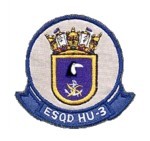Best of 2015: A Combination Of Model Based Design And Reduced Parts Count
08 Jan 2016in
http://www.gripenblogs.com/Lists/Posts/ ... px?ID=1349
What makes the Gripen NG development unique and cost effective is a combination of a model based design and reduced parts count. Both ensure that the Gripen E development is on time and in sync with the latest technologically advanced processes.
The model based development ensures that design errors are detected early and not late in the development process. The system allows verifications to be conducted in simulators and as a result, fewer test flights are needed.
So, while almost 4,000 sorties were required to prepare the C/D model, the new test platforms should fly only a combined 1,200 times.
According to Lars Ydreskog, Saab’s head of aerospace operations,
a model-based design technique is generating huge benefits for the Gripen E project.
“You can show the operator how they will do something in 2023, before you’ve done anything in the development,” he notes.
At the Dubai Air Show 2015, Head of Saab’s aeronautics business area Ulf Nilsson said that
Saab has dramatically reduced the number of parts in Gripen development through modular design.
For example, for Gripen NG, currently one machine part is being used to manufacture a radar frame, but the number of machine parts was more than 20 for the same in Gripen C. This not only delivers cost efficiency, but also means that every new aircraft will be less complex and quicker to put together.
A lot of these efficiency measures come from Saab's experience in the Gripen’s conversion from the A/B to C/D. With every new version, Saab offers something that is technologically advanced, but does not come with a hefty price tag.




